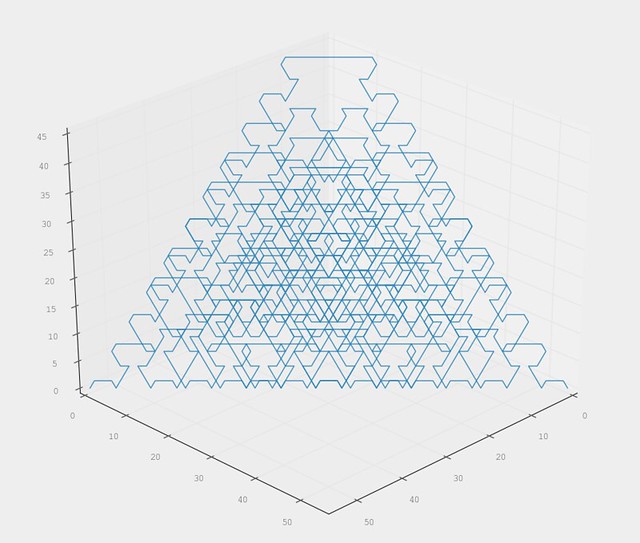Solution path for 'Towers of Hanoi'
Solution path for ‘Towers of Hanoi’
A few years ago I figured out a nice strategy for solving the Towers of Hanoi puzzle in the minimum number of moves. By adding a few restrictions to which moves are allowed one gets one single legal move in every (except the initial) step.
To be able to play with the game easily I represented it as integers stacked on eachother, representing the sizes of the corresponding tiles. So for example the initial position for three tiles would look like this:
1
2
3
- - -
For some reason, it occured to me that if one took the sum of every column in such a representation one would get a point in \( \mathbb{R}^3 \), with the property that that \( x + y + z = s \), where \( s \) is the sum of all numbers up to the number of tiles. This means every such point, after every move in the game, will lie in a plane.
If one performs the game for a few low values of \( s \) and plots the path between the points generated by the moves one starts seeing a pattern, which is natural with the symmetric and recursive structure of the game. At the time I imagine a nice fractal pattern would form if one let the number of tiles grow large, but never investigated it.
Now on a whim, after doing some other things in python during the day that in nature reminded me of the Towers puzzle I wrote a script for playing the game for a given number of tiles, saving the point in every step, and plot the path when it was done.
Writing the script was fun, but the results were far from as interesting or pretty as I had thought. Here is a picture of the path for ten tiles.

The basic problem, visually, is that the path folds in over it self when the number of tiles get larger than about four.